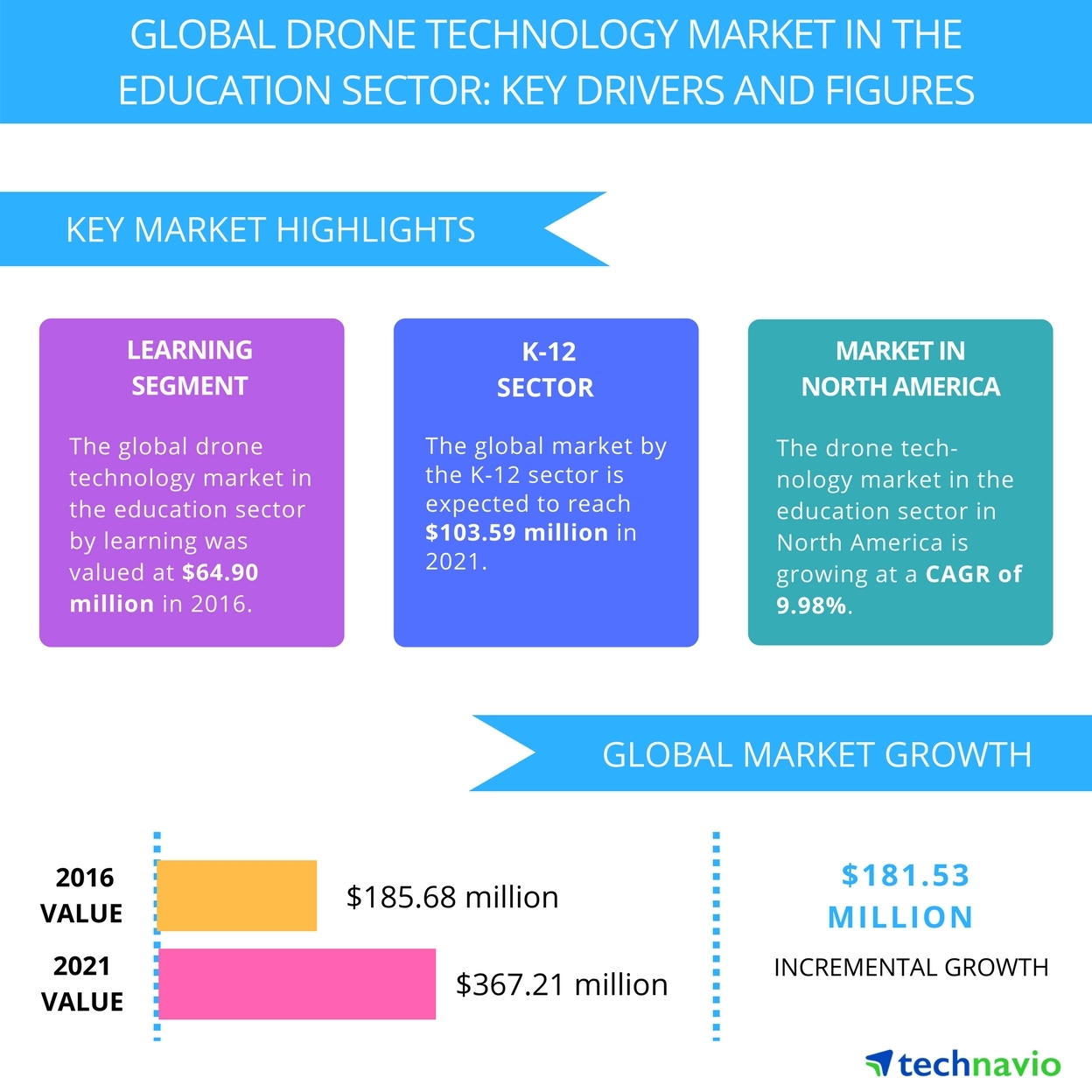Technology research company Technavio has published a new report on the global drone technology market in education. It’s perhaps not an area that gets as much attention as more lucrative market sectors such as photography and agriculture, but it’s certainly on the up.
Technavio market research analysts forecast the global drone technology market in the education sector to grow at a CAGR of close to 15% during the forecast period (2017-21), according to their latest report. By 2021, it’s predicted that the drone education market could be worth over $360 million globally.

The report splits up findings from the global drone market in the education sector by application (learning and security surveillance), end-user (K-12 and higher education sector), and by geography (North America, APAC, Europe, and ROW).
According to Technavio analysts, there are three market drivers contributing to the growth of the global drone technology market in the education sector:
- Incorporation of thermal imaging in drones to improve learning in dark
- Cost-effective technology
- Continuous developments in drone technology
Drone technology in education
It’s clear that drones could play an exciting role in education, particularly in light of STEM skills shortages across the global jobs market. Not only do they combine multiple technologies in one (electronics, photography, robotics, autonomous systems, coding etc), drones also provide an easy way to engage and inspire kids at an early age.
So far, major manufacturers including Parrot are beginning to tap into the education market. But there are startups entering the race to educate the next generation with drones, too. One is BonaDrone, a Catalan company selling 3D printed drones to schools and providing teaching materials help with the process.
We’ve also spoken recently with Iain Kerr from Ocean Alliance, who firmly believes that drones could represent the key to inspiring the next generation of marine researchers. Put simply, they can make science cool.
According to Technovia, the three factors driving the use of drones in education are:
The incorporation of thermal imaging in drones to improve learning in dark
Thermographic cameras are helping students studying courses related to photography, media and entertainment in nighttime scenarios. Recently we look at closer look at thermal imaging cameras in the world of marine conservation.
Cost-effective technology
Drones are getting cheaper. The inexpensive price of drones is one of the key factors responsible for the growth of the global drone technology market in the education sector.
Continuous developments in drone technology
Developments in drone technology are creating a greater amount of use cases and exposing more industries to the capabilities of UAVs. In turn, this will drive the use of drones as an educational tool.
According to Technovia’s Jhansi Mary, “The current expansions in machine learning and computer vision are further driving the growth of the market, thus making drones function as an independent collector of aerial data. There will be an emergence of consumer and commercial drones during the forecast period. The recent key development in software, hardware, and cloud infrastructure services of drones for capturing and recording aerial data or images will be the factors responsible for this.”
Malek Murison is a freelance writer and editor with a passion for tech trends and innovation. He handles product reviews, major releases and keeps an eye on the enthusiast market for DroneLife.
Email Malek
Twitter:@malekmurison
Subscribe to DroneLife here.